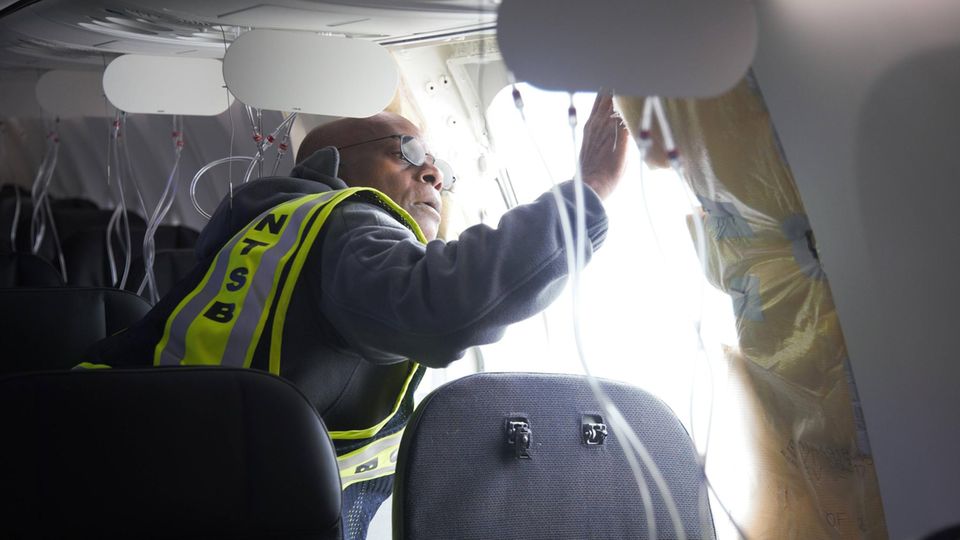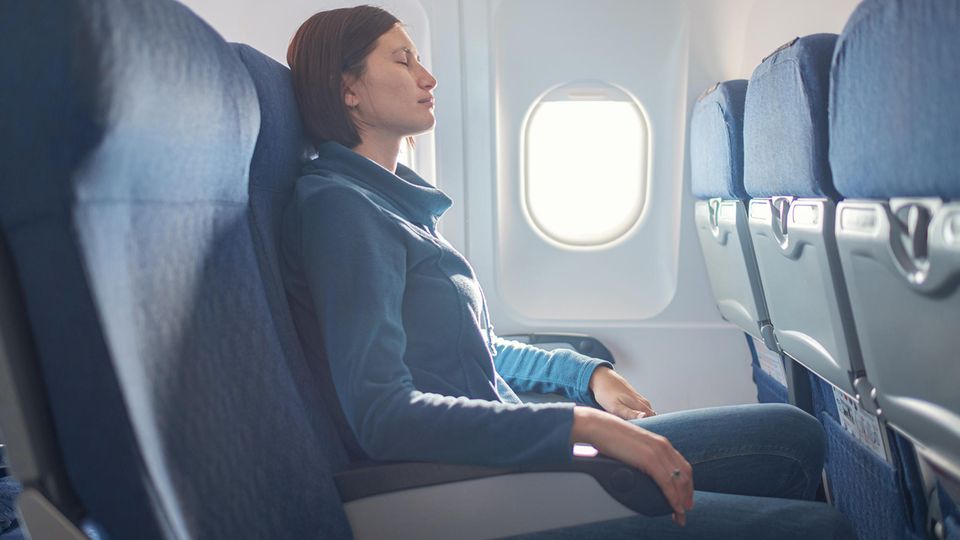Mid-air incident
Four important bolts were missing from Boeing’s torn-out fuselage section
An Alaska Airlines Boeing 737-9 Max at Palm Springs Airport. A fuselage part of one of the airline’s identical aircraft recently came loose during a flight
© Imago Images
After the near-miss with a Boeing 737-9 Max, initial investigations confirm suspicions that fasteners were not only loose, but completely missing. The pressure on Boeing is increasing. Also because further problems arose recently.
According to US accident investigators, the fuselage part of a Boeing 737-9 Max that was recently torn out was missing the necessary fasteners. The condition of the fragment and the adjacent fuselage elements indicate the absence of four bolts in a securing mechanism, the NTSB said in a preliminary report on Tuesday. The bolts are actually intended to ensure that the fuselage part cannot move upwards.
The investigators’ finding is likely to increase pressure on Boeing to dramatically improve quality controls. The NTSB has not yet drawn any official conclusions about the cause of the dramatic incident.
Incident at Boeing: 170 people on board the flight
On January 5th, shortly after take-off, a part of the fuselage in row 26 of the seats broke off in Alaska Airlines’ almost new 737-9 Max with more than 170 people on board. At this point, some configurations of the more seat type have a door. The affected variant of the 737-9 Max instead has a cover that closes the opening. No one was seriously injured in the incident – however, by a lucky coincidence, the two seats directly at the opening remained empty.
After the incident, the US Federal Aviation Administration (FAA) and other authorities ordered all 170 similar aircraft of the type to be grounded for investigations. Alaska and United Airlines also found loose fasteners in the area on other planes. It was not until the end of January that the FAA released the procedure for inspections, after which the aircraft were allowed to take off again. No aircraft of the affected model are in use by EU airlines.
After the incident, the FAA announced stricter controls at Boeing – and some airlines also want to send their own inspectors to the production lines. Boeing boss Dave Calhoun reiterated after the preliminary NTSB report that the company ultimately bears responsibility for the aircraft. “Whatever the final conclusions, Boeing is responsible for what happened. An incident like this should not happen on an aircraft leaving our factory,” Boeing CEO Dave Calhoun said after the results were released.
Boeing also assured that quality oversight would be improved immediately. “We’re going to look at the changes we’ve already made in our factories and elsewhere,” said Doug Ackerman, vice president of supplier quality at Boeing Commercial Airplanes, at a conference near Seattle on Tuesday (local time). The FAA had prohibited Boeing from planning to expand 737 production – the company should first get the problems under control, according to the instructions.
Boeing: Further problems with machines that have not yet been delivered
The fuselage of the 737 models is built by the supplier Spirit Aerosystems and then passed on to Boeing for final assembly. According to the NTSB’s findings, the fuselage fragment was removed at Boeing for rework. A Boeing photo shows the assembled component without the bolts. According to investigators, the lack of damage to the bolt holders also suggests that they were also missing during the flight.
It was only announced on Monday that further quality defects had been noticed in up to 50 737 MAX machines that had not yet been delivered. An employee of the supplier Spirit Aerosystems reported two incorrectly drilled holes in a window frame on the fuselage, Boeing manager Stan Deal, who is responsible for the commercial aircraft business, wrote to the workforce. The letter was initially available exclusively to Reuters, but Boeing later confirmed the problems. “Although this is not an immediate safety issue and all 737s can be operated safely, we believe that approximately 50 undelivered aircraft require improvements,” the letter said. That could slow down production for at least a few days.




